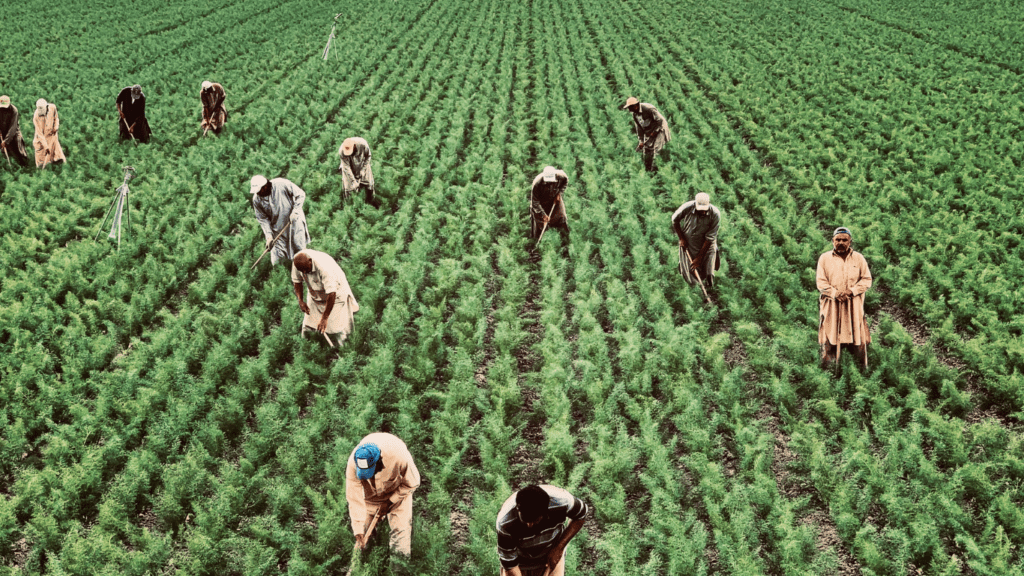Living in a bustling city often means limited access to fresh, locally grown produce. However, urban farming projects are changing the game by bringing green spaces and fresh vegetables right to city residents’ doorsteps. As an advocate for sustainable living, I’ve witnessed the positive impact of these initiatives on urban communities.
In this article, I’ll explore how urban farming projects are revolutionizing the way city dwellers think about their food sources. From rooftop gardens to community plots, these innovative solutions not only provide access to fresh produce but also promote a sense of community and environmental stewardship. Join me as we delve into the world of urban farming and discover how these projects are reshaping the urban landscape for the better.
The Rise of Urban Farming
Urban farming is gaining momentum across cities worldwide, revolutionizing access to fresh produce for urban residents.
Benefits of Urban Farms
- Enhanced Food Security: Urban farms reduce dependence on grocery stores, ensuring a more stable food supply for city dwellers.
- Improved Nutrition: By offering fresh and locally grown produce, urban farming promotes healthier eating habits among residents.
- Environmental Sustainability: These projects minimize the carbon footprint associated with transporting food long distances, contributing to a greener urban environment.
- Limited Space: Urban areas face constraints in available land for farming. Vertical farming and hydroponic systems address this challenge by utilizing minimal space efficiently.
- Water Management: Urban farms tackle water scarcity through innovative irrigation techniques like drip irrigation and rainwater harvesting, ensuring sustainable water usage.
Urban farming’s rise is not just a trend but a sustainable solution to urban food challenges, reshaping the way cities approach food production and consumption.
Case Studies: Successful Urban Farming Initiatives
As I delve into successful urban farming initiatives, two standout examples showcase the innovative approaches employed to bring fresh produce to city residents.
New York City’s Rooftop Farms
In New York City, rooftop farms have become a beacon of urban agriculture success. With limited ground space in the city, utilizing rooftops for farming has proved to be a game-changer. Places like Brooklyn Grange, a rooftop farm spanning several acres, produce a significant amount of fresh produce right in the heart of the city. These rooftop farms not only provide access to local, sustainable produce but also help reduce the carbon footprint associated with transporting food from rural areas to urban centers.
Vertical Farms in Singapore
Singapore has embraced vertical farming as a solution to its limited land availability. Vertical farms, such as Sky Greens, have revolutionized urban agriculture by growing crops in vertically stacked layers. This method optimizes space utilization, allowing for high yields of fresh produce without the need for vast expanses of land. By integrating technology and sustainability practices, vertical farms in Singapore ensure a constant supply of locally grown fruits and vegetables to city dwellers, promoting food security and reducing dependency on imported produce.
Technologies Powering Urban Farming
Urban farming projects are increasingly leveraging innovative technologies to maximize efficiency and productivity in growing fresh produce within city limits. Let’s explore two key technological advancements driving the success of urban farming initiatives.
Hydroponics and Aquaponics
In urban farming, hydroponic and aquaponic systems are revolutionizing the traditional approach to agriculture by eliminating the need for soil and minimizing water usage. Hydroponics allows plants to grow in nutrient-rich water solutions, while aquaponics combines hydroponics with aquaculture, where fish waste provides nutrients for plant growth. These soil-less farming methods are ideal for urban settings as they use space efficiently and consume significantly less water than conventional farming, making them sustainable solutions for urban agriculture.
The Role of AI and IoT in Farm Management
Artificial Intelligence (AI) and the Internet of Things (IoT) play a crucial role in urban farm management by offering real-time monitoring and data analytics for optimal crop growth. AI algorithms analyze environmental factors like temperature, humidity, and lighting to adjust conditions for plant growth automatically. IoT devices enable remote monitoring of crops and alert farmers to potential issues, ensuring timely intervention and maximizing harvest yields. By integrating AI and IoT technologies, urban farmers can enhance productivity, minimize resource wastage, and improve overall sustainability in urban farming practices.
Community Impact and Urban Farming
Urban farming projects have a profound impact on communities, bringing fresh produce directly to city residents. Let’s delve into how these initiatives benefit neighborhoods in various ways.
Enhancing Food Security
Urban farming plays a vital role in enhancing food security within cities. By producing fresh fruits and vegetables locally, these projects reduce dependence on external food sources. Residents have easier access to nutritious produce, helping combat food deserts and ensuring a more stable food supply for urban populations.
Educational Opportunities and Community Engagement
In addition to providing fresh produce, urban farming projects create valuable educational opportunities for residents. By participating in farming activities, community members learn about sustainable agricultural practices, the importance of healthy eating, and the impact of food production on the environment. This hands-on experience fosters community engagement and empowers individuals to make informed choices about their food consumption.

 Gabriella Irvine is a dedicated team member contributing to the growth and development of the project. With a background in environmental science, she brings valuable insights into sustainable practices and community engagement. Gabriella's passion for urban sustainability drives her to collaborate closely with other team members, ensuring that innovative strategies are effectively implemented. Her commitment to education and outreach helps empower individuals and communities to adopt eco-friendly lifestyles, making her an essential asset in fostering positive change within the project.
Gabriella Irvine is a dedicated team member contributing to the growth and development of the project. With a background in environmental science, she brings valuable insights into sustainable practices and community engagement. Gabriella's passion for urban sustainability drives her to collaborate closely with other team members, ensuring that innovative strategies are effectively implemented. Her commitment to education and outreach helps empower individuals and communities to adopt eco-friendly lifestyles, making her an essential asset in fostering positive change within the project.